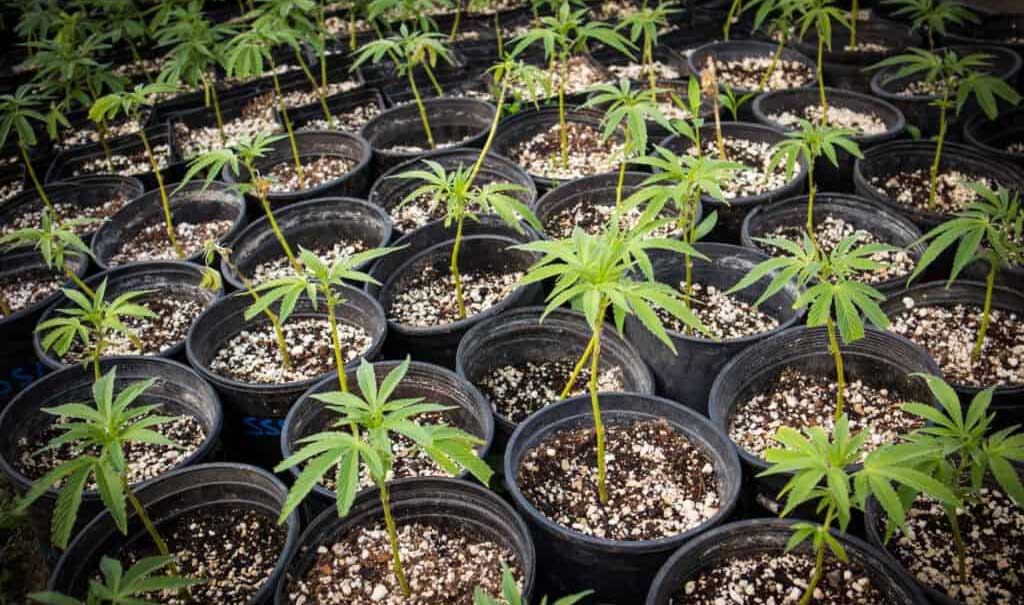For cannabis cultivators who grow indoors, getting the light just right for the life cycle of your plants isn’t an exact science.
When growing indoors, cannabis cultivators need to learn the life and light cycles of the specific cultivar they are growing, and then, imitate the natural light pattern those same plants would be using if they were grown outdoors.
Drilling down into the intricacies of the growth, or vegetative stage, of the cannabis plant you are growing is critical because this is when you can have the most control. If your plants grow well during this phase, you can rest assured that you will have better yield during the flowering stage.
And that begs the question for cannabis cultivators: Do you use a flowering light and a vegging light?
For most cannabis plants, about 18 hours of light a day is needed during the vegetative stage. Cultivators frequently use a 18/6 dark to light ratio to encourage speedy development during vegging. In theory, you can – during the vegetative state – use up to 24 hours a day, and there are a few cannabis cultivators seeing amazing yields with this approach, but it isn’t well studied yet.

medicine marijuana purple leaf, flower bud cannabis on a white background
After your plants reach the size you want (in about 4-6 weeks) during the vegetative state, you can change the amount of light they receive to 12 hours a day to encourage flowering. Most cannabis plants will not develop flowers unless they also have a rest period of about 12 hours of darkness.
So, knowing all of this, the question for cannabis cultivators is: Do you need separate lights for the vegetative stage vs. the flowering stage? And can it really make a difference in your yields?

The type of lighting you choose absolutely can make a difference.
Power
When you understand the cycles of your cannabis plant – propagation, vegetative and flowering – you know that you need different intensities (or power) of light. You start with a less powerful, or propagation, light and then increase it through the vegetative and then flowering stages. Intensity goes hand in hand with power consumption as you can see below. Lower intensity lights are generally lower wattage than higher intensity lights.
For the SpecGrade LED light family, our Ilumina light (for propagation) has these specs:
- Power: 24W
- PPF: >50 μmol/s
- Spectrum: P2
Our vegging light, the Flora-10, has these specs:
- Power: 300W
- PPF: >664 μmol/s
- Spectrum: K1
And finally, our Verta series – our flowering light – has these specs:
- Power: 650W
- PPF: >1478 μmol/s
- Spectrum: A1
So, you can see the intensity increase as the needs of the plant change. Our Flora light was the first-ever dedicated vegging only light on the market and it remains popular. Cannabis cultivators can use our Verta series for both vegging and flowering; however, it isn’t recommended if you have the multiple growing rooms and the space to dedicate to each lifecycle stage and change your lights.
Spectrum
As cannabis plants move from propagation, to vegging to flowering, the spectrum changes as well. A vegging light has a might higher spike in blue light on the spectrum, because plants need more blue light during that phase. For the flowering phase, plants tend to prefer more red light.
But, that said, plants during every phase need the full spectrum of light to best mimic the sun.
Dimming
When you are planning a growing operation, staying within your budget is key so a question many growers as is, can I buy one set of lights and dim them or brighten them as my plants move through the growing phases? Or, can a dimmer turn a flowering light into a vegging light?
The answer is yes, it can be done. Generally, cannabis cultivators don’t start any light at full power and all of the SpecGrade LED grow lights are compatible with 0-10V dimmers– which gives growers even greater control over the intensity at all stages of plant growth.
Why have dedicated lighting for each plant stage?
For indoor cannabis cultivators, creating a perfectly controlled and fine-tuned growing environment is the ultimate goal, so controlling every minute detail of your operation – at every stage of plant growth – is preferred. This is why when you are trying to dial in the ideal environment, it makes it easier to find the right formula when you aren’t starting from scratch using one set of lights to create that environment.
If you use different lights for different phases of growth, you can’t quite set it and forget it – but it’s close.
This is also a huge value add for LED lights, because they afford growers such a high level of personalization and control. They can also be more easily customized, moved and replaced if needed.
And they offer custom spectrums – something HID/HPS/CMH lights do not offer.
The Key Takeaway
For cannabis cultivators, having a high-level of control – even to minute details – can make all the difference in plant quality and yields. Using different lights for different stages of plant growth can unquestionably have an impact on how well a plant performs during each stage, and setting up a custom LED light system for all stages is the best way to maximize yields – and profits.


